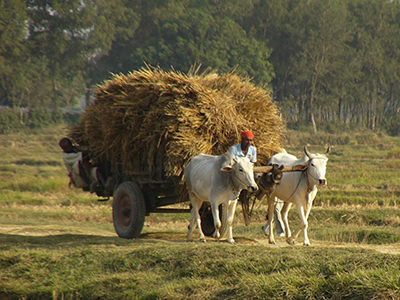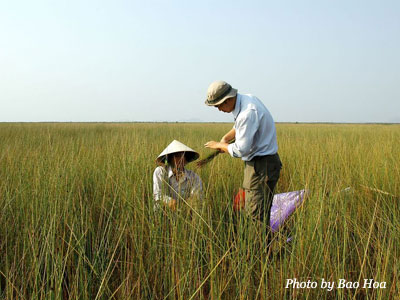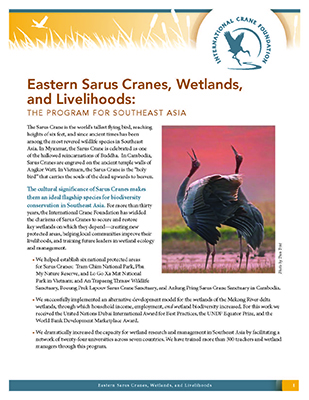Issue
South and Southeast Asia are home to Sarus Cranes, as well as Black-necked Cranes, and wintering Demoiselle and Eurasian Cranes. Vulnerable Sarus Cranes face a myriad of challenges across their range, including loss of wetlands due to agricultural development and reduced water flows, as well as egg removal, power line collisions, pesticide poisoning and other direct threats.
Solutions
Strong cultural ties to cranes and wetlands in India, Nepal, Cambodia and Vietnam provide unique opportunities to engage people in the conservation of these intensely settled landscapes using the Sarus Crane as a flagship species, which in turn also benefits local communities and other species. Our work includes:

View our From the Field Webinar playlist: The Sarus Crane Landscape from South/Southeast Asia to Australia.
Securing the Sarus Crane population in South Asia through community-supported conservation practices and governmental policies that maintain the rich biodiversity of agricultural landscapes. We are:
- Reducing threats to Sarus Crane populations from powerline collisions, illegal conversion of wetlands, and poisoning by agricultural and industrial chemicals.
- Supporting a demonstration site at Lumbini, the birthplace of Buddha, to showcase the Terai landscape of Nepal used by Sarus Cranes and provide conservation education based on the Buddhist love for nature.
- Collaborating with village councils, farmers, and conservation partners to identify and implement strategies that preserve the agricultural and wetland landscapes supporting cranes and communities.

Supporting the growth of Southeast Asia’s population of Sarus Cranes through community-based conservation efforts and broader Mekong River initiatives to protect important wetlands. We are:
- Securing crane dry season habitats in the Mekong Delta and breeding habitats in northern Cambodia and Vietnam by strengthening conservation practices at existing crane sites and safeguarding small remnant wetlands that cranes could use.
- Continuing Mekong Delta community-based wetland and livelihood conservation programs and adapting these models to other important crane areas in Cambodia and Vietnam.
- Mentoring the development of the Mekong Wetland University Network to expand and diversify its contributions to critical wetland and crane status surveys in new areas such as Myanmar, to Mekong basin research, and to the training of conservation scientists from the Mekong countries.
- Assessing and mitigating impacts of large-scale river basin development and climate change on Sarus Cranes and wetlands in collaboration with other key partners in the region.
Monitoring the status of cranes and their habitats from South Asia to Australia and implementing conservation strategies to address emerging threats. We are:
- Enhancing and coordinating strategies for monitoring the status and threats for Sarus Cranes and their habitats in India, Nepal, Myanmar, Cambodia-Vietnam, and Australia.
- Monitoring wintering populations of Eurasian Cranes, Demoiselle Cranes, and Black-necked Cranes in South Asia and, with partners, identifying threat mitigation strategies to secure the future of these species.
- Using range-wide networking and periodic workshops to share information, and develop and test solutions to common threats in different crane landscapes.




